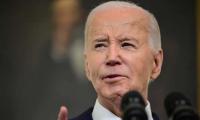LAHORE: When it comes to economic analysis we have two extremes. The government shows optimism and speaks of revival on slightest improvement in any indicator, while the pessimists predict dooms day future on any slippage on some economic target.
Economy is a package. Each indicator and institution connected with the economy has to move in tandem. If our custom clearing system is inefficient, then we can have one off spike in exports which would not sustain for long. If the tax collecting machinery is corrupt, the increase in revenue would come mainly from the compliant sector, while the profitability of non-compliant sectors would correspondingly increase.
If the capital market regulator in incompetent, we may see lopsided manipulative trading round the year with index moving up on one engineered perception and going down when the reality is otherwise. In both cases, the winners are the big manipulators and the losers are small traders.
We have seen our commerce minister showing enthusiasm on slight increase in exports in a certain month and then dodging the media when the exports perform badly the next month. We have not set benchmarks for success.
For us three percent growth in exports is a good sign of improvement in exports. We conveniently forget that our exports grew between 8-10 percent from 1999-2013 almost tripling from $8.5 billion to $25 billion. Thereafter, our exports have remained stagnant moving in a range of $22-24.5 billion in the last seven years.
Any uptick in exports will have to be big - at or above seven percent - for three consecutive months before we assert that the exports are moving. It is worth noting that we at the moment are short of export surplus. A representative of All Pakistan Textile Mills Association has admitted the other day that textile sector is operating on full capacity and surge in textile exports would come when the capacities are enhanced. Till that time we cannot expect growth in exports particularly if we continue to depend on textiles.
It has been pointed out on numerous occasions that import compression of the magnitude managed by this government has compromised our growth. The structure of our economy is such that once we start growing, the current account deficit balloons because most of the growth comes from domestic consumption and not exports.
Even the State Bank of Pakistan governor has conceded that Pakistan has one of the worst exports to GDP ratio. This foreign exchange position again is due to foreign inflows including hot money. It is not possible to maintain healthy foreign exchange reserves on borrowed money.
Take for instance the foreign buying of Pakistan’s treasury bills that has crossed $3 billion. We pay 13 percent annual interest on these treasury bills. Our government’s argument is that we pay the same interest rate if the bills are bought by Pakistani banks so there is no additional interest burden on the state. But there is a problem.
Foreign funds that buy these bills take back the original amount and the interest paid on them in foreign exchange. So when one billion dollar bonds mature in one year, the buyer takes back one billion dollar plus $130 million interest as well.
So if we constantly have $3 billion hot money for one year, we end up paying additional $390 million as interest. We probably pay the almost same cumulative interest on foreign loans worth $10 billion taken as loan from World Bank, Asian Development Bank or from our friendly countries.
Coming to the one off surge in large scale manufacturing in the month of December, we must realise it does not indicate that the manufacturing sector is out of the woods. First we need to probe as two why the LSM data for December was released in mid-February. It should have been out by the middle of January.
Then we have to analyse the factors that contributed to LSM growth in December. The largest growth was shown in sugar production. Cotton production was down, car production was very low, and most of other manufactured items were in red. We should wait for the manufacturing data for January and February before making any conclusions about industrial revival.
Industrial revival is extremely important for our economy because most of the jobs and most of the revenues come from this. Another point worth noting is that despite healthy LSM growth in December, the overall LSM growth in last 6 months is still more than three percent negative.
A representational image showing an oil refinery. — AFP/FileKARACHI: Pakistan Petroleum Limited has announced a...
P@SHA Chairman Zohaib Khan was the esteemed Chief Guest at Aptech 2023. — X/PASHAORG/FileKARACHI: Muhammad Zohaib...
PSX marked the listing of the Mahaana Islamic Index Exchange Traded Fund with a gong ceremony on April 23, 2024. —...
FPCCI Regional Chairman and VP Zaki Aijaz while speaking during a round table discussion on the challenges and...
This representational image shows Gold bars. — AFP/FileKARACHI: Gold prices in the local market fell by Rs7,800 per...
Security personnel walk past the US Federal Reserve building in Washington, DC on Oct 22, 2021. — AFPNew York:...







